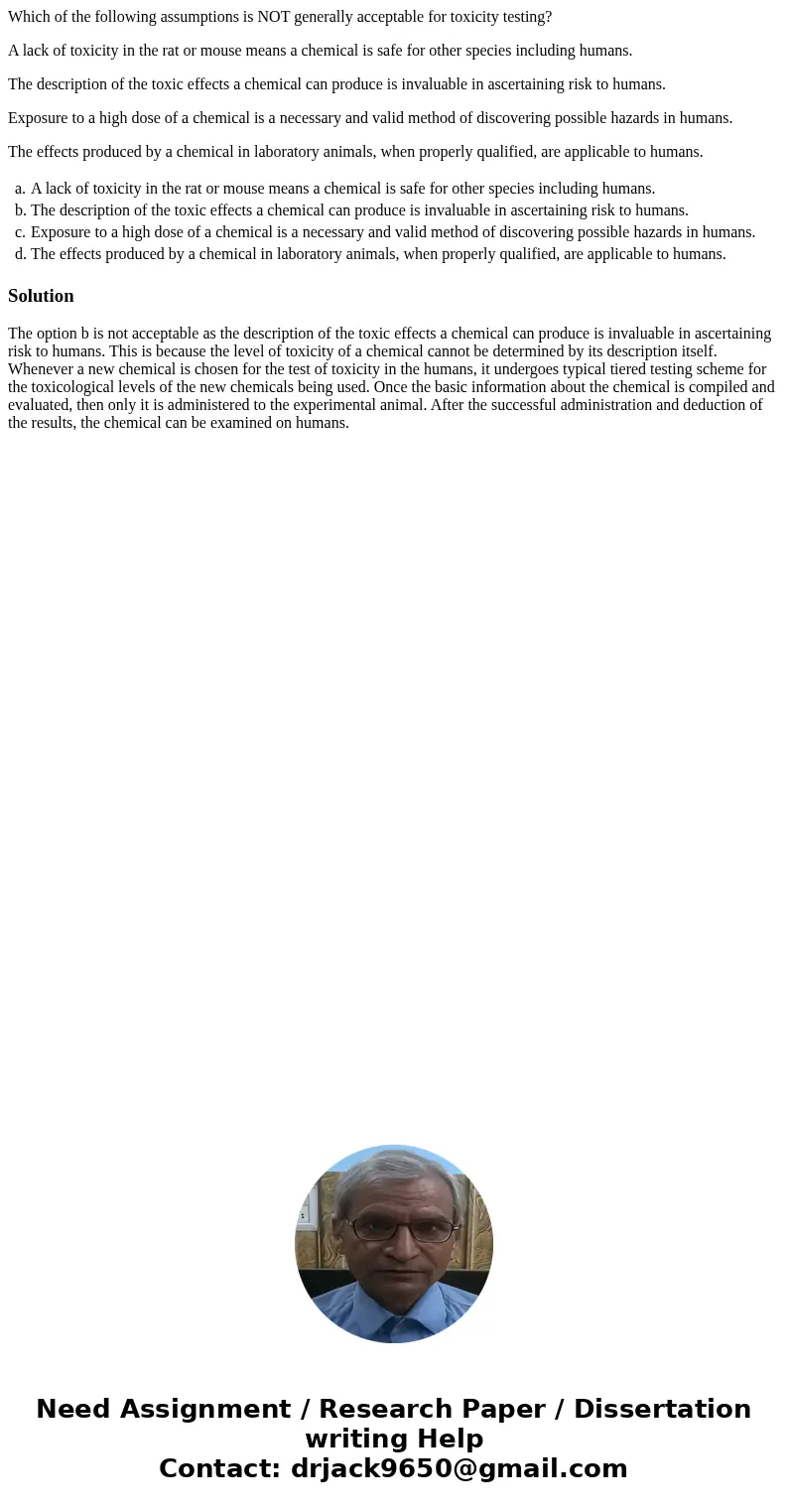Which of the following assumptions is NOT generally acceptab
Which of the following assumptions is NOT generally acceptable for toxicity testing?
A lack of toxicity in the rat or mouse means a chemical is safe for other species including humans.
The description of the toxic effects a chemical can produce is invaluable in ascertaining risk to humans.
Exposure to a high dose of a chemical is a necessary and valid method of discovering possible hazards in humans.
The effects produced by a chemical in laboratory animals, when properly qualified, are applicable to humans.
| a. | A lack of toxicity in the rat or mouse means a chemical is safe for other species including humans. | |
| b. | The description of the toxic effects a chemical can produce is invaluable in ascertaining risk to humans. | |
| c. | Exposure to a high dose of a chemical is a necessary and valid method of discovering possible hazards in humans. | |
| d. | The effects produced by a chemical in laboratory animals, when properly qualified, are applicable to humans. |
Solution
The option b is not acceptable as the description of the toxic effects a chemical can produce is invaluable in ascertaining risk to humans. This is because the level of toxicity of a chemical cannot be determined by its description itself. Whenever a new chemical is chosen for the test of toxicity in the humans, it undergoes typical tiered testing scheme for the toxicological levels of the new chemicals being used. Once the basic information about the chemical is compiled and evaluated, then only it is administered to the experimental animal. After the successful administration and deduction of the results, the chemical can be examined on humans.

 Homework Sourse
Homework Sourse